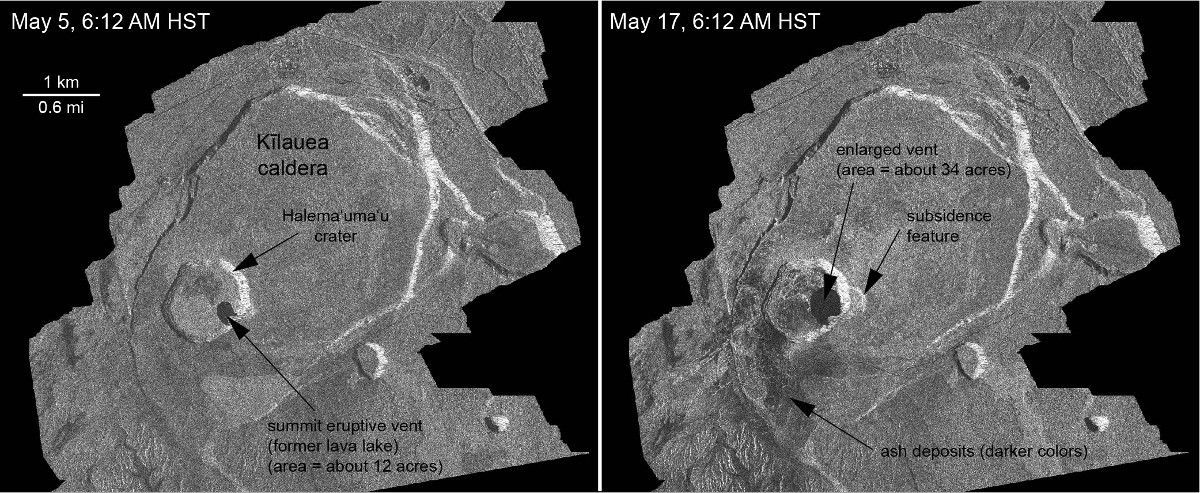(BIVN) – A new set of radar images show the changes at the summit of Kīlauea Volcano over a two week period.
The USGS Hawaiian Volcano Observatory posted the above image on its website Friday, adding:
These radar amplitude images were acquired by the Italian Space Agency’s Cosmo-SkyMed satellite system and show changes to the caldera area of Kīlauea Volcano that occurred between May 5 at 6:12 a.m. HST (left) and May 17 at 6:12 a.m. HST (right). The satellite transmits a radar signal at the surface and measures the strength of the reflection, with bright areas indicating a strong reflection and dark areas a weak reflection. Strong reflections indicate rough surfaces or slopes that point back at the radar, while weak reflections come from smooth surfaces or slopes angled away from the radar. The May 17 image was acquired after two small explosions from the summit eruptive vent. Major changes with respect to the May 5 image include: (1) a darkening of the terrain south of Halema‘uma‘u, which may reflect accumulation of ash over the 12-day period between the images; (2) enlargement of the summit eruptive vent on the floor of Halema‘uma‘u, from about 12 acres on May 5 to about 34 acres on May 17; and (3) the development of a small depression (area of about 15 acres) on the east rim of Halema‘uma‘u that reflects slumping of a portion of the rim towards the growing collapse pit on the crater floor.
No explosive eruption of ash have occurred at the Kilauea summit since Thursday morning, USGS reported Friday at 8:52 a.m. HST, however additional explosions are possible at any time.
“Seismic levels, which abruptly decreased after explosive eruptions on Wednesday night and early Thursday morning, are slowly increasing,” the scientists wrote. “At this time, based on HVO web cameras, a robust plume of gas and steam is billowing out of the Overlook vent and drifting generally southwest.”


by Big Island Video News9:17 am
on at
STORY SUMMARY
HAWAII VOLCANOES NATIONAL PARK - Major changes include a 15-acre depression that "reflects slumping of a portion of the rim towards the growing collapse pit on the crater floor."